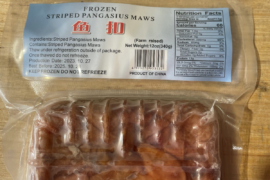After a brief period of strong supply expansion in 2014, the global salmon industry is reverting to the “high-cycle scenario” present since late 2012, Utrecht, Holland-headquartered Rabobank predicted in a new report issued on August 28. This temporary, but unusually long-lasting, undersupply and high price environment is expected to remain for at least the coming two years. During this period, the salmon farming sector will focus strongly on biosecurity, sustainability, cost control, certification and technological innovations.
Increased global demand is expected to support the high price environment and the strong profitability of farmers. This expectation holds true, even with Russia’s recent ban on Norwegian and EU salmon, which will likely create large scale trade shifts and price volatility.
“Growth will undoubtedly return – but when, where and how remains unknown,” said Rabobank analyst Gorjan Nikolik. “In two or three years’ time, possibly due to technological innovation, the salmon farming industry is likely to solve many of the biological and environmental issues that are currently being tackled.”
Despite the strong growth in the first half of 2014, legislative and biological constraints in both Norway and Chile are coinciding to limit further growth in supply and will likely prolong the high price environment. Nearly all Norwegian salmon producers are now reaching their legal production limit and, for some time, the Norwegian industry and legislators have debated whether changing this legislation to increase limits would allow growth in the sector. Based on all the growth possibilities, Norwegian supply growth is expected to range from 3-5% in the coming three years, provided there are no negative developments. While this is respectable, it is considerably lower than the long term average of 7%.
In Chile, the deterioration of the sanitary conditions during 2012 and 2013, along with increasing costs and the resulting financial losses for producers, have ultimately been the main reasons for the slowdown in growth. Measures taken by producers and regulators have reversed the negative trend and, assuming the good sanitary conditions and profitability remain, the Chilean industry could emerge in the long term as the leading growth driver of global supply.
With high levels of profitability in the industry, the key question is what farmers will do with this cash flow in an environment with relatively limited organic growth options. Rabobank expects that investing in biosecurity will receive the utmost priority and ample funding, especially when it comes to tackling the lice problems in Norway and Chile. Furthermore, although sustainability is not necessarily a function of tight supply, it will also be addressed within the framework of the sector’s commitment to the Aquaculture Stewardship Council (ASC) certification, as part of the Global Salmon Initiative (GSI). If the GSI goals are achieved as planned by 2020, farmed salmon will not only be a leading protein in terms of its healthiness, but it will also be an example in terms of sustainability and the low environmental impact of the farming process.





